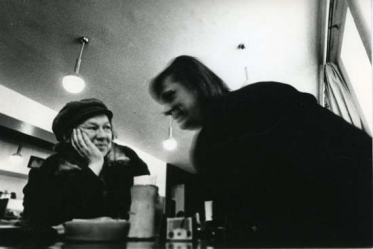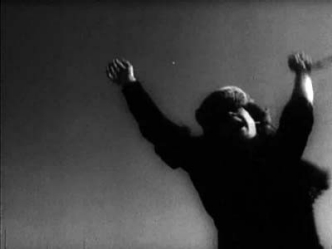This short—just half an hour—made-for-TV film, scripted by Paul-Eerik Rummo (b. 1942) and directed by Virve Aruoja (1922–2013) and Jaan Tooming (b. 1946), is doubtlessly one of the most remarkable cinematic endeavors to come out of Estonia. Its production started in the mid-1970 and was halted a year later after the Artistic Council of the Estonian Television Film Studio rejected the film’s initial (and only) screen version as “at odds with the principles of socialist realism.” The management of the studio regarded Endless Day as so great a political threat that the film was not only banned forever but slated for destruction. The people who were told to destroy it, however, secretly took the prints to Virve Aruoja, who hid them first in her own cellar and later, after marrying a Swede and moving to Sweden, in her brother’s shed. (Her brother, Vello Aruoja, had been one of the two cinematographers of the film along with Peeter Tooming, Jaan’s brother and a legendary Estonian photographer). Almost 20 years later, after the fall of the Soviet Union, Peeter Tooming brought the prints to light and completed the film in 1991. The film was fully rediscovered, however, only in 2006, when it received its unfairly belated premiere in cinemas (in March 2006) and on Estonian Television (in December 2006). In 2009, it was also released on DVD, along with a number of other forgotten Estonian shorts.
The uncompromising creativity that characterizes Endless Day is not surprising when one considers the artistic biographies of its authors. Since the mid-1960s, both Jaan Tooming and Paul-Eerik Rummo were central figures in the so-called theater revolution at the Vanemuine Theater in Estonia’s principal university town, Tartu. There, Rummo’s Cinderella Game (Tuhkatriinumäng, 1969) captured the anxious atmosphere that both preceded and followed the spring of 1968. Virve Aruoja was also trained as a theater director, though she had started working for Estonian television in the mid-1950s. It was there that she produced Between Three Plagues, a feature-length TV-biopic about a 16th-century Estonian chronicler Balthasar Russow, on which Jaan Tooming assisted her and was also featured as one of the protagonists. Subsequently, Aruoja and Tooming formed a productive team where Tooming’s overflowing creative energies were channeled and balanced by Aruoja’s analytical mind. Peeter Tooming, who had worked as a cinematographer at Tallinnfilm, Estonia’s main film studio, since 1967, was one of the founders of the innovative STODOM group of photographers in 1964 and is best known for his self-consciously modernist imagery.
Archival materials reveal that Rummo’s initial screenplay was directed and filmed with unusual fidelity, which testifies to the strength and resonance of its underlying idea. In Rummo’s vision, the image track was to be complemented by an equally important sound track, composed entirely of songs (for which Rummo wrote the lyrics) and almost devoid of dialogue. Narratively, both the image track and the sound track conveyed the idea of a man in search of his voice and place in the world. In Rummo’s words, he yearned for the times when lyrics, melody, and performance had not yet been separated, and he wished he had the skills to not only write the words but also create the music. His lyrics were meant as a protest against both the ideological pressures of the “crude Communism” of Soviet authorities and the lame mainstream of popular music. Tõnu Tepandi, the performer and coauthor (with Olav Ehala) of these stunning tunes, was assigned to this role by Rummo from the start, as Rummo felt Tepandi’s style and outlook were close to his own. Tepandi was already known for his remarkable music in 1968, and he became affiliated with Vanemuine Theater in 1970. In 1969, he took part, alongside Jaan Tooming and others, in the much-celebrated Suitsu-Night at Tallinn Writers’ House, an important milestone of the “Estonian theater revolution” where six actors performed verses by Gustav Suits, an Estonian poet and literary scholar who had fled to Sweden in 1944.


